Today Current Affairs: 8th April 2022 for UPSC IAS exams, State PSC exams, SSC CGL, State SSC, RRB, Railways, Banking Exam & IBPS, etc
Table of Contents
Russia Got Suspended From The Human Rights Council:
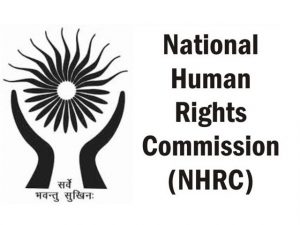
The United Nations General Assembly suspended Russia from the Human Rights Council during a meeting recently.
- Ninety-four members voted in favour while 24 voted against, and 58 abstained.
- India also abstained in the UNGA vote moved by the United States to suspend Russia over allegations that the country’s soldiers tortured and killed civilians while retreating from Ukrainian towns.
- India’s position adds to a string of abstentions at the United Nations and multilateral groups since the start of Russian military operations in Ukraine on February 24, even as the continuing Russian military advances in Ukraine have seen more and more countries vote for resolutions that criticise Moscow.
- UNHRC was reconstituted from its predecessor organisation, the UN Commission on Human Rights to help overcome the “credibility deficit” of the previous organisation.
- Headquartered in Geneva, Switzerland.
- The UNHRC has 47 members serving at any time with elections held to fill up seats every year, based on allocations to regions across the world to ensure geographical representation.
- Each elected member serves for a term of three years.
- Countries are disallowed from occupying a seat for more than two consecutive terms.
- The UNHRC passes non-binding resolutions on human rights issues through a periodic review of all 193 UN member states called the Universal Periodic Review (UPR).
- It oversees expert investigation of violations in specific countries (Special Procedures).
Grants-In-Aid To The Dalai Lama’s Central Tibetan Relief Committee:
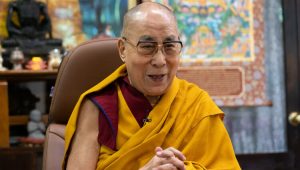
The Union government has extended the scheme to provide ₹40 crore grants-in-aid to the Dalai Lama’s Central Tibetan Relief Committee (CTRC) for another five years, up to fiscal year 2025-26.
Highlights of the Scheme:
- Launched in 2015.
- It is a scheme of providing grant-in-aid of ₹40 crore to CTRC to meet the administrative and social welfare activities expenses of 36 Tibetan settlement offices in different States.
More than one lakh Tibetan refugees are settled in India.
- Major concentration of the Tibetan refugees is in Karnataka, Himachal Pradesh, Arunachal Pradesh, Uttarakhand, West Bengal and Jammu and Kashmir.
- Tibetan refugees began pouring into India in the wake of the flight of the Dalai Lama from Tibet in 1959.
- The government decided to give them asylum as well as assistance towards temporary settlement.
- Over 1 lakh Tibetans are settled across India, while the remaining are settled in United States, Australia, Brazil, Canada, Costa Rica, France, Mexico, Mongolia, Germany, United Kingdom, Switzerland and various other countries.
- The Central Tibetan Administration exists and functions on the basis of the Constitution of the Tibetan government called ‘The Charter of the Tibetans in Exile’.
- In 1991, The Constitution Redrafting Committee instituted by the Dalai Lama prepared the Charter for Tibetans in exile.
- The Dalai Lama approved it on June 28, 1991.
- Only Tibetans living outside the subcontinent will elect their MPs based on their current geographic location. Besides MPs, voters will make their choice of the President as well.
- The voting will be held in two rounds.
- In the preliminary round, there will be no official candidates, i.e. a voter can choose any person of his choice, which is expected to be one of the several candidates who have started campaigning among the electorate.
- Unless a person secures 60 percent of the vote, the two top contenders of the first round will become the official candidates for the second round to be held in April 11.
- The Kashag (Cabinet) is Central Tibetan Administration’s highest executive office and comprise seven members.
- It is headed by the Sikyong (political leader) who is directly elected by the exiled Tibetan population.
- Sikyong subsequently nominates his seven Kalons (ministers) and seeks the parliament’s approval.
- The Kashag’s term is for five years.
Challenge To The Electoral Bond Scheme, 2018:

Chief Justice of India N V Ramana has assured petitioners that the Supreme Court will take up for hearing a pending plea challenging the Electoral Bond Scheme, 2018.
- Two NGOs — Common Cause and Association for Democratic Reforms (ADR) — have challenged the scheme, alleging that it is “distorting democracy”. The CJI has not specified any date for the hearing.
- Electoral Bond is a financial instrument for making donations to political parties.
- The bonds are issued in multiples of Rs. 1,000, Rs. 10,000, Rs. 1 lakh, Rs. 10 lakh and Rs. 1 crore without any maximum limit.
- State Bank of India is authorised to issue and encash these bonds, which are valid for fifteen days from the date of issuance.
- These bonds are redeemable in the designated account of a registered political party.
- The bonds are available for purchase by any person (who is a citizen of India or incorporated or established in India) for a period of ten days each in the months of January, April, July and October as may be specified by the Central Government.
- A person being an individual can buy bonds, either singly or jointly with other individuals.
- Donor’s name is not mentioned on the bond.
Six Years Of Stand Up India Scheme:

On 5th April 2016, The Stand-up India scheme was launched by the Indian government. On 5th April 2022, it completed six years.
- Under this scheme over 1.33 lakh new job-creators and entrepreneurs have been facilitated.
- Over 1 lakh women entrepreneurs have benefited under this scheme in the last six years.
- Under this scheme, Rs. 30,160 crores have been sanctioned by the government to a total of 1,33,995 accounts up to 21st March 2022.
- Out of the total sanctioned accounts, 6,435 accounts belonged to ST borrowers with Rs 1373.71 crore sanctioned and 19,310 accounts belonged to SC borrowers with Rs 3976.84 crore sanctioned.
- To 1,08,250 women entrepreneurs who held accounts, Rs. 24809.89 crore has been sanctioned.
‘Stand Up India Scheme’:
- Launched in 2016.
- It seeks to promote entrepreneurship at the grass-root level of economic empowerment and job creation.
- Aim: To leverage the institutional credit structure to reach out to the underserved sector of people such as SCs, STs and Women Entrepreneurs.
- The offices of SIDBI and NABARD shall be designated Stand-Up Connect Centres (SUCC).
- Loans under the scheme are available for only Greenfield projects.
- Obective is to facilitate loans from Scheduled Commercial Banks (SCBs) of value between Rs 10 lakh and Rs 1 crore to at least one SC or ST borrower and one woman borrower per bank branch for setting up green field enterprises in manufacturing, service or trading sector.
The Weapons Of Mass Destruction Amendment Bill, 2022:
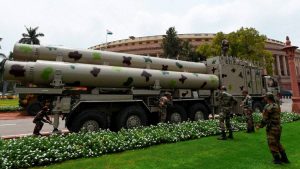
The bill was recently passed in Lok Sabha.
- The Weapons of Mass Destruction and their Delivery Systems (Prohibition of Unlawful Activities) Act, passed in 2005, only banned the manufacturing of weapons of mass destruction.
- The amendment bill is aimed at widening its ambit.
Highlights of the Bill:
- The Bill bars persons from financing any prohibited activity related to weapons of mass destruction and their delivery systems.
To prevent persons from financing such activities, the central government may freeze, seize or attach their funds, financial assets, or economic resources. - It may also prohibit persons from making finances or related services available for the benefit of other persons in relation to any activity which is prohibited.
Weapons of mass destruction are weapons with the capacity to inflict death and destruction on such a massive scale and so indiscriminately that its very presence in the hands of a hostile power can be considered a grievous threat.
- India’s 2005 WMD Act defines Weapons of mass destruction as biological, chemical, or nuclear weapons.
- In the USA, WMD includes a nuclear, radiological, chemical, biological, or other device that is intended to harm a large number of people.
The bill was recently passed in Lok Sabha.
The Weapons of Mass Destruction and their Delivery Systems (Prohibition of Unlawful Activities) Act, passed in 2005, only banned the manufacturing of weapons of mass destruction.
The amendment bill is aimed at widening its ambit.
Need for the Amendment:
To focus on the financial bit of activities supporting WMDs. There was an urgent need to have provision to ban financing for Weapons of Mass Destruction. The existing legislation was silent on this aspect.
To provide more teeth to government to act against terror funding. The present bill empowers theGovernment to freeze, seize or attach funds or other financial assets or economic resources for preventing such financing.
Highlights of the Bill:
Prohibition on financing certain activities: The Bill bars persons from financing any prohibited activity related to weapons of mass destruction and their delivery systems.
It gives more powers to the Central Government: To prevent persons from financing such activities, the central government may freeze, seize or attach their funds, financial assets, or economic resources.
It may also prohibit persons from making finances or related services available for the benefit of other persons in relation to any activity which is prohibited.
What are weapons of mass destruction?
These are weapons with the capacity to inflict death and destruction on such a massive scale and so indiscriminately that its very presence in the hands of a hostile power can be considered a grievous threat.
India’s 2005 WMD Act defines Weapons of mass destruction as biological, chemical, or nuclear weapons.
In the USA, WMD includes a nuclear, radiological, chemical, biological, or other device that is intended to harm a large number of people.
International Energy Agency (IEA) To Release 120 Million Barrels Of Crude Oil:

India has welcomed the decision by the International Energy Agency (IEA) to release 120 million barrels of crude oil from its strategic reserves, in addition to the release of 180 million barrels of crude oil from the strategic reserves of the US.
- The move is aimed at calming crude oil prices that hit a 14 year-high of $139 per barrel in March.
- India had in November 2021 announced that it would release 5 million barrels from the strategic reserve as part of a coordinated effort with other crude oil importing countries to stabilise the price of crude oil.
- The International Energy Agency (IEA) is a Paris-based autonomous intergovernmental organisation.
- It was established in the framework of the Organisation for Economic Co-operation and Development (OECD) in 1974 in the wake of the 1973 oil crisis.
- The IEA was initially dedicated to responding to physical disruptions in the supply of oil, as well as serving as an information source on statistics about the international oil market and other energy sectors.
- It is best known for the publication of its annual World Energy Outlook.
- Only OECD member states can become members of the IEA. In 2022, Lithuania joined the IEA and became its 31st member.
Mission Vatsalya:

The Union government plans to partner with the private sector and volunteer groups for its scheme for protection of vulnerable children such as those abandoned or missing.
- The Ministry of Women and Child Development sent its draft guidelines for Mission Vatsalya Scheme to States and Union Territories and sought suggestions by April 18, 2022.
- Mission Vatsalya is essentially renaming of a pre-existing scheme called Child Protection Services, and also includes child welfare services.
- To encourage public participation and utilise the resources available for success of the mission, the civil society, people’s groups and various volunteering organisations can be encouraged to participate under Mission Vatsalyain a systematic and planned manner.
- These could include organisations under government initiatives such as Bharat Scout and Guide, NSS Volunteers, and Nehru Yuva Kendras. More NGOs and Self-Help Groups could be identified.
- The Ministry has also proposed a Vatsalya portal that will allow volunteers to register so that State and District Authorities can engage them for executing various schemes.
- Child protection programme components include institutional services through child care institutions (CCI) and family-based non-institutional care through sponsorship, foster care and adoption.
- It also supports after-care programme for children at CCIs once they turn 18, and emergency outreach service through Childline or the national helpline 1098 for children.
Tour Of Duty Scheme:
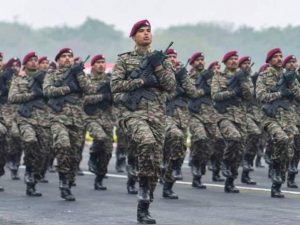
The Department of Military Affairs is moving towards finalising the “Tour of Duty (ToD)” scheme.
- Under this scheme, youngsters will be recruited as soldiers only for three years.
- This is being done in the backdrop of the urgent need to curb the ballooning salary and pension bills that are adversely impacting military modernization.
- Tour of Duty (ToD) scheme was being pushed by the late Chief Of Defence Staff General Bipin Rawat.
- It involves recruiting soldiers, which will be called Agniveers, for a fixed period of three years.
- It will be a voluntary engagement.
- It is also known as the Agnipath entry scheme.
- It is for youths who “do not want to make defence services their permanent vocation, but still want to experience the thrill and adventure of military professionalism”.
- The soldiers would be given a payout along with priority in recruitment to certain government jobs, including the central armed police forces.
- An effort is also on to nudge corporate India into hiring such ex-ToD recruits for specific lines of work in the private sector on a priority basis.
- Tour of Duty’, will help not only resolve the issue of shortages of personnel but also reduce the burden of pay rises and pensions.
- As per the original ToD proposal, the “prospective life-term saving” in the cost of engagement of a single jawan who leaves after 17 years of service with pension and other benefits, as compared to a ToD jawan will be Rs 11.5 crore.
- The cumulative money saved in pay and gratuity payouts can consequently be used for the much-needed military modernization.
What Is a Protoplanet?

The Hubble Space Telescope has photographed a Jupiter-like protoplanet forming through a process that researchers have described as intense and violent.
- The Hubble Space Telescope is a project of international cooperation between National Aeronautics and Space Administration (NASA) and ESA (European Space Agency).
- The newly forming planet captured by Hubble is called AB Aurigae b and embedded in a protoplanetary disk with distinct spiral structures swirling around and surrounding a young star that is estimated to be about 2 million years old.
- That is also about the same age our solar system was when planet formation was underway.
- It is 531 light-years away from our sun.
- This protoplanet is probably around nine times the size of Jupiter and orbits its host star at a distance of 8.6 billion miles, over two times the distance between our Sun and pluto.
- Protoplanets are small celestial objects that are the size of a moon or a bit bigger. They are small planets, like an even smaller version of a dwarf planet.
- Astronomers believe that these objects form during the creation of a solar system.
- The most popular theory of how a solar system is formed says that a giant cloud of molecular dust collapsed, forming one or more stars.
- Then a cloud of gas forms around the new star. As a result of gravity and other forces, the dust and other particles in this cloud collide and stick together forming larger masses.
- While some of these objects break apart on impact, a number of them continue to grow.
- Once they reach a certain size – around a kilometre – these objects are large enough to attract particles and other small objects with their gravity. They continue to get larger until they form protoplanets.
Earth Observation Satellite: EOS-02
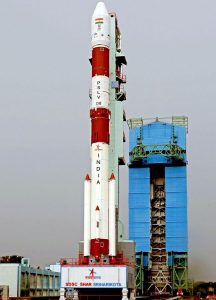
The Union Minister of Science & Technology said that EOS (Earth Observation Satellite)-02 satellite will be launched in the second quarter of 2022.
- The launch was delayed due to pandemic and consequent lockdown.
- Earlier, the Indian Space Research Organisation’s earth observation satellite EOS-04 and two small satellites (INSPIREsat-1 and INS-2TD) were successfully placed into the intended orbit by the PSLV (Polar Satellite Launch Vehicle)-C52 rocket.
- EOS-02 is Technology demonstration satellite for various new technologies with applications that include agriculture, forestry, geology, hydrology, miniaturised power electronics, reaction wheels etc. and forming the payload for SSLV (Small Satellite Launch Vehicle)-1.
- SSLV is the smallest vehicle weighing only 110-tonne. It will take only 72 hours to integrate, unlike the 70 days taken now for a launch vehicle.
- It aims to cater to the market for the launch of small satellites into Earth’s low orbits that has emerged in recent years to cater to the needs of developing countries, universities for small satellites, and private corporations.
Other Satellites in the EOS Series:
EOS-01: Earth Observation satellite meant for Agriculture, Forestry & disaster management support
EOS-03: First Agile Earth Observation satellite in Geostationary orbit and applications which include near real time imaging, quick monitoring of natural disasters, spectral signatures for agriculture, forestry etc.
EOS-04: Radar Imaging satellite meant to provide high quality images under all weather conditions for applications such as Agriculture, Forestry & Plantations, Soil Moisture & Hydrology and Flood Mapping.
EOS-05: Earth Observation Satellite in the Geostationary Orbit.
EOS-06: Earth Observation satellite meant for applications, which include ocean related services and advisories towards potential fishing zone forecast , ocean state forecast.
Functioning Of The UIDAI : CAG Report

The Comptroller and Auditor General (CAG) of India, has pulled up the Unique Identification Authority of India (UIDAI) over a range of issues related to the issuance of Aadhaar cards.
- The findings are part of the first performance review by the country’s independent auditor of UIDAI, which was carried out over a four-year period between FY2015 and FY2019.
- The UIDAI is a statutory authority established on 12th July 2016 by the Government of India under the jurisdiction of the Ministry of Electronics and Information Technology, following the provisions of the Aadhaar Act 2016.
- The UIDAI was initially set up by the Government of India in January 2009, as an attached office under the aegis of the Planning Commission.
- The UIDAI is mandated to assign a 12-digit unique identification (UID) number (Aadhaar) to all the residents of India.
CAG Report:
- UIDAI has not prescribed any specific proof/document or process for confirming whether an applicant has resided in India for the specified period, and takes confirmation of the residential status through a casual self-declaration from the applicant.
- Also, there was no system in place to check the affirmations of the applicant.
- In India, Aadhaar numbers are only issued to individuals who have resided for a period of 182 days or more in the 12 months before the date of application.
- According to the CAG report, the UIDAI had to cancel more than 4,75,000 Aadhaars (as of November 2019) for “being duplicate”.
- This data indicates that on average no less than 145 Aadhaars generated in a day during the period of nine years since 2010 were duplicate numbers requiring cancellation.
- The purpose of the Aadhaar system is that it is unique – that is, no individual can obtain two Aadhaar numbers, and that a specific person’s biometrics cannot be used to obtain Aadhaar numbers for different people.
- UIDAI appeared to have charged people for biometric updates when poor quality data was fed in during enrolment.
- UIDAI did not take responsibility for poor quality biometrics and put the onus on the resident and charged fees for it.
- All the Aadhaar numbers stored in the UIDAI database were not supported with documents on the demographic information of the resident.
- It “caused doubts about the correctness and completeness of resident’s data collected and stored by UIDAI prior to 2016”.
- The audit was also critical of UIDAI’s move to issue Aadhaar cards to children and newborns without biometrics under an initiative known as Bal Aadhaar.
- This needs to be reviewed because anyway after 5 years, a child has to apply for new regular Aadhar. The unique identity is not matched anyway because it is issued on the basis of documents of parents.
- Apart from being violative of the statutory provisions, the UIDAI has also incurred avoidable expenditure of Rs 310 crore on the issue of Bal Aadhaars till 31st March 2019.
- In Phase- II of ICT assistance a further sum of Rs 288.11 crore was released up to the year 2020-21 to states/schools primarily for the issuance of Aadhaars to minor children.




